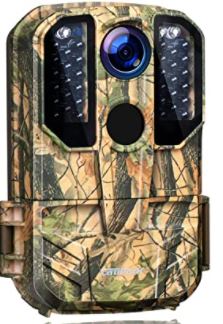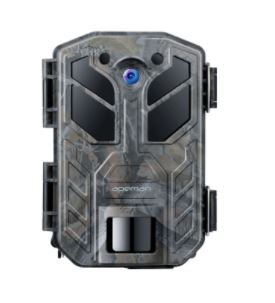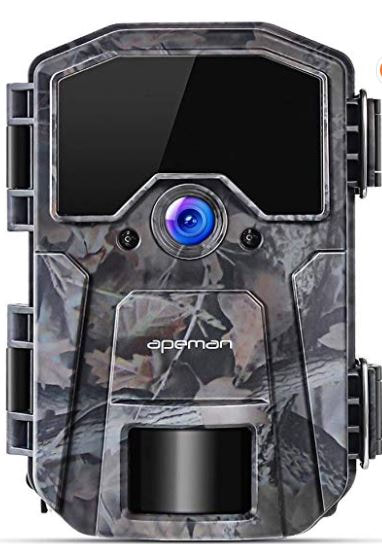Trail Cameras can be a lot of fun for viewing wildlife. However, using a trail camera for security in some cases can be cheaper than setting up a good security camera system. With that, there are a lot of pros and cons to using trail cameras for a home’s security or security in general. This can make using trail cameras worth it for some people to use them but might not be ideal for everyone, here are a few reasons why.
Cost
Trail cameras, in some cases, can be a lot cheaper to use than a security system. A good trail camera will cost you anywhere from $50 to $100. A good quality security camera will start at around $100 and quickly get to a higher price. This can get even more expensive if you use the services provided by a company to monitor your home or other assets. One downfall trail cameras have is that they usually are powered by batteries which can get really expensive if your trail cameras are getting a lot of pictures or videos.
There are a few ways around this however, trail cameras can use rechargeable batteries, solar panels, or even larger exterior batteries. These products would drop the cost of buying one time use batteries over and over which can quickly rack up costs. Another way using a trail camera for security is cheaper is the setup. Some security systems have to have a professional or professionals to come in and set them up. Trail cameras can usually be set up without much struggle. Most have an easy to use menu that allows you to choose if you want pictures or videos. Then all you have to do is find the optimal location in your yard and put it there.
Mobile Alerts
One of the benefits of using a security camera over a trail camera is the mobile alerts. A security system can be set up to alert you if there is movement inside or outside of your home. These alerts can also be programmed to immediately notify police or firefighters depending on the emergency that may be happening. Some trail cameras can be set up to send pictures or videos to your cell phone through either cellular data or Wifi. Trail cameras cannot detect if there is a fire in your home whereas some security systems can.
Trail cameras can also be limited on the size of the video you are able to record if you choose to use a cellular trail camera. Some cellular trail cameras have been known to not send videos to your phone if the recorded videos exceed 20 seconds. Trail cameras are also unable to send you notifications of your doors being opened or windows being broken.
Convinieance
Both trail cameras and security cameras can be set up and checked using their corresponding apps on your phone. Doing this does cost a lot more in either case. If you don’t set up your trail cameras to send you the pictures or videos, it will require you to check your cameras. This will require you to pull out the SD cards in your cameras whenever you want to see what they are able to catch.
Using a trail camera for security can also allow you to hide your cameras better. This is because most trail cameras have camouflage patterns. Trail cameras can also be hidden in bushes or trees a lot easier than regular security cameras. One disadvantage trail cameras have is they are not meant to be used indoors and can be hard to find places for them inside if you want to use them there. They also don’t fit in with most home decor.
Trail cameras use a lot less digital storage than most security systems. This is because trail cameras do not record continually. While some security systems can have this same function a lot of them continuously record. This can also be a problem for some trail cameras. Some trail cameras do not always catch everything that goes by them. This is because a trail camera’s motion detector must be triggered. This feature can have issues if something like a branch blocks the motion detector. Because trail cameras are activated by motion detection, they can be slow to turn on and start recording. This can cause some important footage to be missed.
Weather
Trail cameras can be affected by all types of weather. If the weather is really hot it can “fry” your trail cameras for a period of time. excessive heat can cause the camera to shut off or be slower taking pictures or videos once motion is detected.
Also, if you leave your trail camera, or cameras in general, in direct sunlight, it can burn out the camera’s eye. This can cause the camera to lose the ability to record in color or make black spots appear over the lenses. Cold temperatures can also affect trail cameras. Batteries can drain a lot faster when it is cold outside and may need to be replaced a lot more often. Also, like in hot temperatures cold can slow down a trail camera’s reaction time. Snow can also be a major problem for trail cameras. Snow can block the camera lens or even the motion detector. This can cause the camera to take pictures or videos continuously or not take any at all until they are cleared of snow.
Recamendation
We would not recommend using a trail camera for security in areas where there is a lot of risk to security. Trail cameras can be used for security but in some cases, they can be unreliable. They also cannot be used well indoors and will usually stick out because of the camouflage patterns that they are usually equipped with. Trail cameras can also be affected by weather especially in areas where weather can be extreme. However, in areas where risk is low trail cameras may be a cheaper option than owning an entire security system. Also with time, you can learn what trail cameras work well around the area you are trying to secure. Trail cameras also do not notify local authorities if there is a danger to your property.
Suggested Trail Camera for Security List
Below is a list of trail cameras that we would suggest using for security. If you would like to see our reviews of these trail cameras click the trail camera review button!





